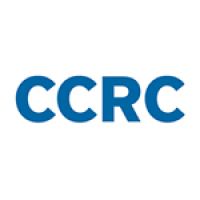By Davis Jenkins, Hana Lahr, and Thomas Brock
Guided pathways is a whole-college reform model designed to help community college students explore, choose, plan, and complete—in a reasonable time and cost—programs that enable them to secure a good job directly or successfully transfer to a bachelor’s program in a specific major. It is based on decades of research by CCRC and others on how to improve college success for students who start at a community colleges. More than 400 community colleges have used the model as a basis for reform, some for as many as 10 years. But because whole-college reform is hard to evaluate, no prior major study has examined how successfully colleges have adopted guided pathways or what its effects have been on students. Now, two recent studies from CCRC are providing an unprecedented look at guided pathways reforms at approximately 100 colleges over multiple years.
Read more about the studies in a CCRC brief, Lessons From Two Major Evaluations of Guided Pathways
The studies, which are summarized in a new brief, examine the scale at which colleges have implemented guided pathways reforms and the association between guided pathways practices and student outcomes. The first is an evaluation of the AACC Pathways Project, which involved 30 colleges from around the country that were committed to making guided pathways reforms. The second is a National Science Foundation (NSF)-supported evaluation of guided pathways in three states—Ohio, Tennessee, and Washington State—that launched initiatives to assist the 70 two-year public colleges across their systems to adopt these reforms. The studies find that:
- Whole-college reform on the guided pathways model is feasible but takes time—at least five years—to accomplish.
- There is a positive relationship between the scaled implementation of complementary sets of guided pathways practices and some measures of student achievement in AACC Pathways colleges that made the most progress in implementing guided pathways reforms and in one state (Tennessee) that got an early start on reforms and made good progress. In places that made less progress, the association is weak or not evident.
- While students from all backgrounds may benefit from guided pathways reforms, the reforms are not sufficient to close equity gaps between racial/ethnic groups.
At colleges adopting guided pathways reforms, administrators, faculty, and staff work together to rethink and redesign college practices across the student’s educational journey. These include mapping programs and organizing them into clusters of majors to facilitate onboarding and academic advising; helping students explore options and create individual program plans; improving advising, scheduling, and progress monitoring; redesigning developmental education; and improving teaching and learning throughout programs.
Undertaking such fundamental changes at colleges is a heavy lift. It requires supportive leadership and active involvement from stakeholders across the institution, and it is made more challenging in a period of uncertain resources, declining enrollments, and generational leadership turnover. Because of the complexity of these reforms—and because the COVID-19 pandemic interrupted progress at many institutions—only about a third of the colleges in the studies adopted most guided pathways model practices at scale, meaning that they affected at least 80% of students or programs, by the end of the study period in 2022.
Yet, using data on first-year student outcomes of successive cohorts of entering students, both studies found evidence of an association between the adoption of guided pathways practices and improvements in some metrics of early student momentum, which previous research has shown to be leading indicators of completion and transfer success in the longer term. The findings from the NSF study, which relied on more rigorous quantitative analysis, are more mixed.
The AACC Pathways study found that most of the 30 colleges saw improvements on most early momentum metrics over the five years after the project started and that, notably, the colleges that adopted a fully scaled set of practices saw markedly higher increases in college credit accumulation in the first year. Yet persistence rates declined at both sets of colleges, likely due in part to the COVID-19 pandemic.
The NSF study found no evidence that adopting at least five guided pathways practices is associated with improvements in early momentum, but it did find that the adoption of particular practices within and across guided pathways practice areas is correlated with stronger improvements in early academic success than the adoption of any individual practice. Combinations of practices that focus on helping students stay on the path to a degree—such as mandatory ongoing advising—had the strongest associations with early student success.
The findings of both studies are broadly consistent with the central premise of guided pathways: Improving student success requires colleges to implement at scale a set of complementary practices that change the experience for all students, not just particular groups, in entering and making progress in a program. Both studies also point to recommendations for colleges undertaking guided pathways reforms:
Offer ongoing case managed advising by field, predictable schedules, and other supports to help students complete their plans. Both studies found that average persistence rates did not increase, suggesting that while helping students onboard and gain credit momentum in a program is important, students need ongoing support to complete their programs on time. Improving scheduling for on-time completion is much needed by community college students yet was the least likely practice to be adopted by colleges in both studies.
Remove the obstacle to student success created by prerequisite remediation, particularly in math. AACC Pathways colleges that made substantial reforms to student onboarding and advising but kept in place prerequisite developmental mathematics did not see any marked improvements in early student momentum.
Take steps to strengthen teaching and learning in program gateway courses outside of math and English composition. Neither the AACC Pathways study nor the NSF study found evidence of improved college-level course success rates; even colleges that are further along in scaling guided pathways reforms have generally not done much to systematically strengthen pedagogy in courses outside of math and English.
Implement tailored guided pathways practices for students from underserved groups. In the AACC Pathways study, we see improvements in key early momentum indicators for all racial/ethnic groups of students, but equity gaps nevertheless persist. Even with guided pathways, colleges must be proactive in reaching out to and tailoring support for first-generation and low-income students, students of color, older returning students, and other groups with different needs.
We are encouraged by the progress the colleges in these two studies have made in implementing and scaling guided pathways reforms, especially during the challenging environment of the pandemic. Further improvements along the lines of these recommendations will help community colleges that have embarked on guided pathways to build on the achievements they have made.





